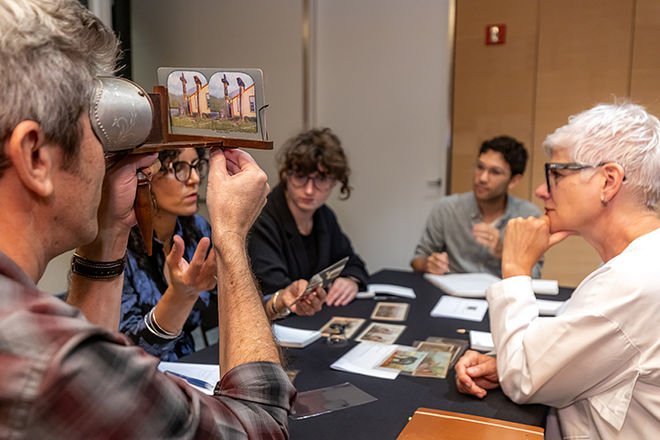From the Exhibition:
New
York Crystal Palace 1853
In 1853, the northwest gallery of the
New York Crystal Palace exhibited some of the most precious objects made in the
United States—notably, gold and silver ware, jewelry, watches, and other
personal ornaments. Among the local contributors, two of the city’s most
prominent retailers and manufacturers of silver and jewelry, Ball, Black &
Co. and Tiffany & Co., received the highest award at the fair, a silver
medal, for their “fine specimens of Gold Presentation Plate and articles of
silverware” and “elaborately wrought Classical Silverware and Jewelry of
Superior design and execution,” respectively.
The
Ball, Black & Co. pitcher may have been part of the display at the fair;
the firm presented similar examples of elaborately executed silver as well as
gold. According to Gleason’s Pictorial
Drawing-Room Companion, two impressive tea services in solid California gold
were shown at the New York Crystal Palace (fig. 1)—one consisting of
twenty-nine pieces and valued at $15,000; the other, a four-piece service tea
for shipping magnate Edward K. Collins, engraved with his initials.
Although now lost, the Collins gold service was adorned with the same high-relief
grapes and vine leaves as those on this silver pitcher. At the 1851 Crystal
Palace in London, the Collins tea service had already been praised for its
intricate ornamentation, “finished with the same care that fine jewelry is.”
On
the underside of the pitcher’s base, next to Ball, Tompkins & Black (as
Ball, Black & Co. was known before 1851), is the recognizable mark of the
manufacturer, John C. Moore. During the mid-nineteenth century, Moore (1803–1874)
produced some of the most representative silver of the period, adorned with his
signature pattern: rusticated grapevine handles and bodies chased with repoussé
grape clusters. These foliate and serpentine forms encapsulate the Rococo revival
style, so popular at the time.
As one of New York City’s premiere silversmiths, the Moore firm also produced
services in the neo-Rococo style for the other prominent luxury retail house, Tiffany
& Co., with which the silversmith entered into an exclusive production
agreement around 1851.
At
the New York Crystal Palace, works in precious metal in particular were considered
an example of American ingenuity, artistry, and industry. The Gleason’s Pictorial article notes that,
although Ball, Black & Co. sold much imported jewelry and gems in their
Broadway store, the company had chosen to exhibit only genuinely American
products at the fair. “There is nothing in the whole palace more thoroughly American
than this gorgeous mineral and artistic display. All the gold and much of the
silver came from the occidental world. Every article was made here, by our own
artists, under the immediate supervision of Ball, Black & Co.”
Thus, gold and silver objects such as this pitcher were considered an epitome
of the country’s vast natural resources as well as of American aesthetic taste.
In its display and promotion of national art and industry, the importance of
the New York Crystal Palace Exhibition cannot be understated.
[1] The Association for the Exhibition of the Industry of All Nations, The Official Awards of Juries (New York: W. C. Bryant, 1853), 85.
[2] Frederick Gleason and Maturin Murray Ballou, eds. Gleason’s Pictorial Drawing-Room Companion 5, no. 14 (October 1, 1853), 213. The service had been commissioned by a group of Manhattan merchants for presentation to Collins, who had established an American flag line of transatlantic steamers.
[3] Commentary from the Independent (August 21, 1851), 139. Quoted in Deborah Dependahl Waters, “‘Silver Ware in Great Perfection’: The Precious Metals Trades in New York City,” in Art in the Empire City New York, ed. Catherine Voorsanger and John K. Howat, 370 (New York: Metropolitan Museum of Art, 2000).
[4] The interest in neo-Rococo was reinforced during the early 1850s, with the restoration of France’s Second Empire. See Debra Schmidt Bach, “Makers, Masters, and Manufacturers: Early Industrialization of the Silver Trade in Antebellum New York” (PhD Diss., Bard Graduate Center, 2014), 239.
[5] Moore continued to sell the grape pattern for presentation tea services through Ball, Black & Co., despite his exclusive manufacturing contract with Tiffany. Bach, “Makers, Masters, and Manufacturers,” 91.
[6] Gleason’s Pictorial (October 1, 1853), 213.













